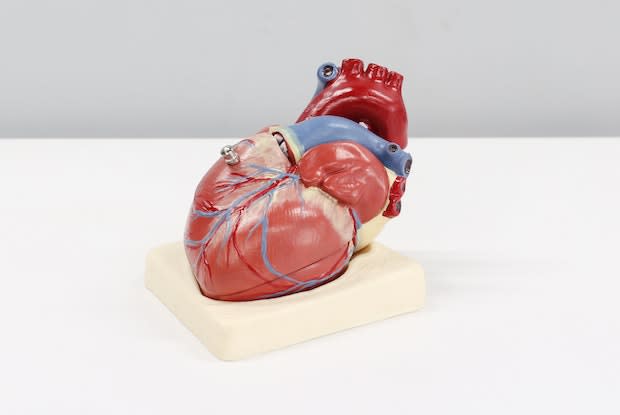Table of Contents
II. Conditions that may require blood thinners
IV. Side effects of blood thinners
What are blood thinners?
Blood thinners are a vital part of treatment plans for many Americans with blood flow issues. Around 2 to 3 million in the United States take blood thinners, like Xarelto, every year. Blood thinners help prevent the formation of blood clots within the body. Blood clots form when certain parts of the blood thicken and form a mass in the bloodstream. When these masses form, they can travel through the bloodstream and cause dangerous heart attacks, stroke, or deadly clots in the lungs. Blood thinners can be taken orally or through a vein. [1]
a. Types of blood thinners
There are two types of blood thinners called anti-platelets and anticoagulants. Anticoagulants keep the blood from clotting or turning into a solid clump of cells. These drugs are most common in pill form.
The second class of blood thinners is anti-platelets, which target particular parts of the blood. Anti-platelets keep blood platelets from sticking to each other and the walls of blood vessels. These drugs are typically weaker than anticoagulants and are often prescribed to prevent future blood clots, rather than to treat existing ones. [2]

Conditions that may require blood thinners
Blood thinners are necessary for many medical conditions but are typically used in the treatment of heart disease. Doctors may recommend blood thinners if you have the following conditions:
- Atherosclerosis: This condition involves a buildup of plaque (a combination of fats, cholesterol, and calcium) that leads to a narrowing of arteries. Arteries are the blood vessels that carry essential nutrition and oxygen from your heart to the rest of the body. Pieces of plaque can also break off and cause blood clots.
- Arrhythmia: This is a heart disorder that affects the rate at which the heart beats. Arrhythmia can cause the heart to beat too fast, too slow, too early, or too erratically. Most arrhythmias are harmless, but some can become problematic.
- Cardiomyopathy: This condition causes the heart’s muscles to weaken. Cardiomyopathy makes the heart unable to pump blood efficiently to the rest of the body.
- Congenital heart defects: Congenital heart defects are heart irregularities that are present at birth.
- Heart infections: The heart can contract infections caused by bacteria, viruses, and parasites, which can cause heart disease.
- Coronary artery disease (CAD): This is the most common form of heart disease and causes impaired blood flow to the arteries that supply blood to the heart. [3]
Diagnosis
Doctors will closely monitor your dosage, once they determine that your medical condition requires a blood thinner. Blood thinner medications need to be taken correctly for the blood thinners to take effect. Many people who are taking anticoagulants have other accompanying illnesses, which can affect the absorption of anticoagulants.
Your doctor will most likely perform regular tests to make sure your body is reacting properly to the blood thinners. Doctors may run a prothrombin time (PT) test that measures how long the blood takes to clot. PT tests can also check for bleeding problems as well as measure the effectiveness of the blood thinners. Other tests like partial thromboplastin time (PTT) might be used if you take heparin, a type of blood-clotting medicine, to check if your dosage is correct. [4]

Side effects of blood thinners
All blood-thinning medications come with an increased risk of bleeding. Because these medications thin the blood, it can take much longer for a cut to heal because the blood is not clotting as quickly as usual. Excessive bleeding can occur in a variety of ways that can include:
- Heavy periods
- Prolonged bleeding from a cut
- Nosebleeds
- Bleeding gums
- Bloody or discolored feces or urine
Some more common side effects can include:
- Rashes
- Hair loss
- Muscle weakness
- Dizziness [5]
Xarelto is a popular blood thinner and can also cause excessive bleeding if left untreated. Xarelto has similar side effects to most other blood thinners but can include pain in your arms or legs, as well as muscle spasms. Always consult your doctor if you have any persistent side effects. [6]
Xarelto
Xarelto, an anticoagulant, is a relatively new brand name medication that is starting to replace older blood thinners like Warfarin. This drug, also known by its generic name Rivaroxaban, blocks the activity of certain clotting substances in the blood. Xarelto is used primarily to prevent a specific type of blood clot called deep vein thrombosis (DVT). DVTs often occur after major surgery, such as a knee or hip replacement. They are also common in people who cannot move around very much, such as people in the hospital or older adults.
DVTs occur when blood moves too slowly through the veins and creates clumps of blood cells. As described earlier, blood clots can travel within the bloodstream and disrupt blood flow in the heart or lungs, which can cause heart attacks and strokes. Aspirin is typically prescribed alongside Xarelto to lower the risk of these conditions.
Xarelto is a popular medication, but make sure you tell your doctor of any pre-existing conditions before taking this drug. It is important to note that Xarelto can cause a serious blood clot around your spinal cord if you have received a spinal tap or spinal anesthesia, like an epidural.[7]

a. What happened to Warfarin?
Warfarin (Coumadin) used to be the most commonly prescribed blood-thinner medication. Warfarin is still used, but doctors and scientists now realize that blood thinner medications are not one-size-fits-all drugs. The blood thinning medication market has become more diverse and there are now several options that your doctor can prescribe. New options allow doctors to customize treatment plans depending on your health and overall lifestyle. Some new drugs on the market include Apixaban (Eliquis), Dabigatran (Pradaxa),Edoxaban (Savaysa), and Rivaroxaban (Xarelto).
Studies show that these new drugs work just as well as Warfarin and pose the same benefits and risks. Some people prefer new medicines because Warfarin requires a monthly blood test to make sure the drug is working correctly. New drugs like Xarelto are more convenient and do not require as much testing. People taking Warfarin also have to watch how much vitamin K they consume because it affects how well the drug works.[8]
The content in this article is intended for informational purposes only. This website does not provide medical advice. In all circumstances, you should always seek the advice of your physician and/or other qualified health professionals(s) for drug, medical condition, or treatment advice. The content provided on this website is not a substitute for professional medical advice, diagnosis or treatment.
